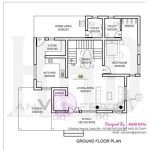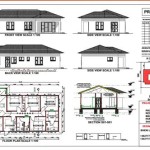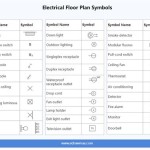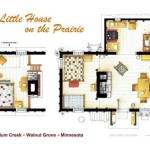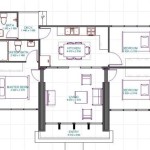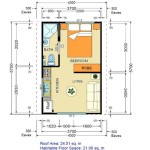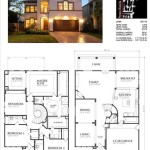Design Floor Plan For House: Free Resources and Essential Considerations
Designing a house floor plan is a complex but crucial undertaking. It sets the foundation for the entire living experience within a home, defining spatial relationships, traffic flow, and overall functionality. The availability of free resources for floor plan design has democratized the process, allowing individuals to explore design possibilities and participate more actively in shaping their future homes. However, leveraging these free tools effectively requires understanding their limitations and a solid grasp of fundamental design principles.
This article explores the landscape of free floor plan design resources, outlining key considerations for creating a functional and aesthetically pleasing home. It delves into the types of software available, the common features they offer, and the crucial aspects that need careful consideration during the design process. While free tools can be a valuable starting point, understanding their scope and supplementing them with professional expertise when necessary is essential for achieving optimal results.
Understanding the Landscape of Free Floor Plan Design Software
The spectrum of free floor plan design software ranges from basic online tools to more sophisticated downloadable programs. Online "room planners" often provide a drag-and-drop interface, allowing users to create simple 2D layouts by selecting pre-defined elements like walls, doors, windows, and furniture. These tools are typically browser-based, requiring no installation and offering immediate accessibility.
Downloadable free software, on the other hand, may offer a wider array of features, including 3D visualization, material selection, and even basic building information modeling (BIM) capabilities. These programs often require registration and may have trial periods with limited functionality. They tend to be more resource-intensive, requiring a compatible operating system and adequate processing power.
Open-source architectural design software represents another category. These programs are collaboratively developed and distributed under open-source licenses, allowing for community contributions and modifications. They can offer a high degree of customization and flexibility, but they typically require a steeper learning curve and may lack the user-friendly interface of commercial alternatives.
Choosing the right free software depends on the user's skill level, project complexity, and desired level of detail. Simple room planners are suitable for basic space planning and furniture arrangement, while more advanced programs are better suited for designing entire house floor plans with greater accuracy and visual realism.
Key Considerations for Designing a Functional Floor Plan
Beyond the software itself, the success of a floor plan hinges on adhering to fundamental design principles and considering various factors that impact the livability of the space. These considerations span from basic spatial relationships to accessibility and energy efficiency.
Traffic Flow: A well-designed floor plan optimizes movement throughout the house. Corridors should be wide enough to accommodate traffic without feeling cramped, and pathways should connect frequently used spaces directly. Avoid creating bottlenecks or forcing people to pass through private areas to reach common zones.
Spatial Relationships: Careful consideration of how different rooms relate to each other is crucial. The kitchen should ideally be adjacent to the dining area, and the living room should be positioned to maximize natural light and offer a comfortable gathering space. Private areas like bedrooms and bathrooms should be located away from noisy areas like the entrance or kitchen.
Room Sizes: The size of each room should be proportionate to its intended use and the overall scale of the house. A too-small living room will feel cramped and unwelcoming, while a too-large bedroom might feel impersonal and inefficient. Consider the furniture that will occupy each room and ensure there is adequate circulation space.
Natural Light and Ventilation: Maximize natural light by strategically placing windows and skylights. Consider the orientation of the house and the path of the sun throughout the day. Proper ventilation is essential for maintaining indoor air quality and preventing moisture buildup. Ensure that each room has adequate windows or other means of ventilation.
Privacy: Design the floor plan to provide adequate privacy for different areas of the house. Bedrooms should be shielded from noise and traffic, and bathrooms should be located away from common areas. Consider incorporating buffer zones or soundproofing materials to further enhance privacy.
Accessibility: If accessibility is a concern, design the floor plan to accommodate wheelchairs, walkers, or other mobility aids. Ensure doorways are wide enough, hallways are clear of obstacles, and bathrooms have appropriate grab bars and turning space. Consider incorporating universal design principles to create a home that is accessible to people of all abilities.
Storage: Adequate storage is essential for maintaining a clutter-free and organized home. Incorporate closets, cabinets, and shelving units throughout the house, considering the specific storage needs of each room. Think vertically to maximize storage space and consider incorporating built-in storage solutions.
Future Needs: Design the floor plan with future needs in mind. Consider whether you might need to add a home office, accommodate aging parents, or expand the family in the future. Design flexible spaces that can be easily adapted to changing needs.
Limitations of Free Software and the Role of Professional Expertise
While free floor plan design software offers valuable tools for visualizing and experimenting with different layouts, it is important to acknowledge their limitations. These limitations can impact the accuracy, feasibility, and overall quality of the design.
Accuracy and Detail: Free software often lacks the precision and detail of professional-grade architectural software. Measurements may not be exact, and the range of building materials and finishes may be limited. This can affect the accuracy of cost estimates and the overall realism of the design.
Building Codes and Regulations: Free software typically does not incorporate building codes and regulations, which are essential for ensuring the safety and compliance of the design. Adhering to these codes is crucial for obtaining building permits and ensuring the structural integrity of the house.
Structural Considerations: Free software may not adequately address structural considerations, such as load-bearing walls, roof support, and foundation design. Neglecting these elements can lead to structural problems and safety hazards.
Energy Efficiency: While some free software may offer basic energy efficiency features, it often lacks the sophisticated analysis tools needed to optimize energy performance. Designing an energy-efficient home requires considering factors such as insulation, window placement, and HVAC systems.
Collaboration and Communication: Free software may not offer robust collaboration features, making it difficult to share designs with contractors, architects, and other stakeholders. Effective communication is essential for ensuring that everyone is on the same page and that the design is executed accurately.
Given these limitations, consulting with a qualified architect or building designer is highly recommended, especially for complex projects or when building codes and regulations are a concern. A professional can provide expert guidance on structural considerations, energy efficiency, building codes, and other critical aspects of the design process.
Architects can also help refine the design, optimize spatial arrangements, and ensure that the floor plan meets the specific needs and preferences of the homeowner. They can provide detailed construction drawings and specifications, which are essential for obtaining building permits and ensuring accurate construction.
Ultimately, free floor plan design software can be a valuable tool for exploring design possibilities and visualizing different layouts. However, it should be used as a starting point, supplemented with professional expertise when necessary, to ensure a functional, safe, and aesthetically pleasing home.

Floor Plan Creator And Designer Free Easy App

Floor Plan Creator And Designer Free Easy App

Floor Plan Creator Planner 5d

Free Plan American Design Concepts Llc

6 Best Free Room Design Floorplan Moving Com

2d Floor Plans

Free Residential Home Floor Plans Evstudio

Floor Plan Creator Planner 5d

Free House Design Home And Plans

Free Editable Open Floor Plans Edrawmax

